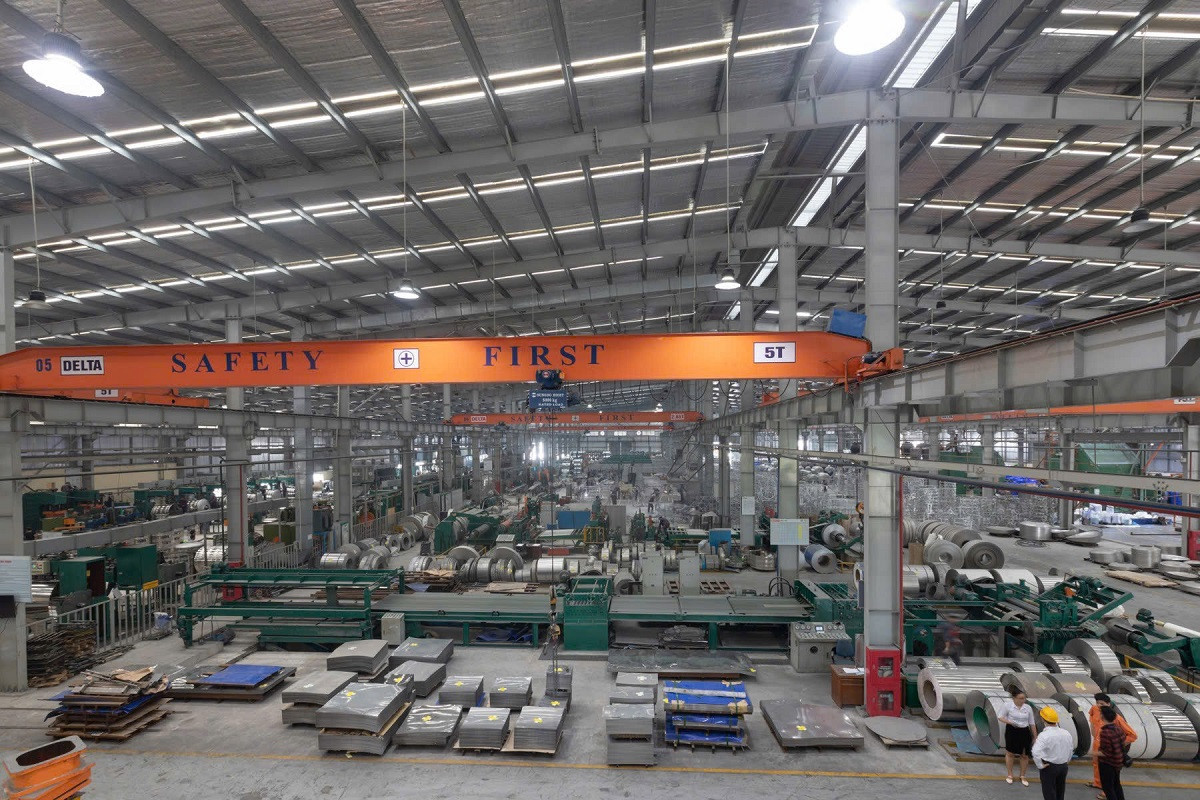
By linking products to eight main export sectors and enhancing the application of digital technology, the companies expect a 20-30 percent growth rate by 2030.
HAMI deputy chair Nguyen Cong Cuong, who is also Vice Chairman of the Hanoi Association of Major Industrial Product Enterprises (HAMI), talked with VietNamNet about the enterprises’ operations.
What are the milestones HAMI’s enterprises have made on the path to the world market?
HAMI has fewer than 100 member companies, but they have annual turnover of hundreds of trillion of dong, accounting for 35 percent of Hanoi’s total production value and industrial output. Many companies have revenue of trillions of dong, including technology firms such as MISA, and other national brands such as Rang Dong, Nutricare, Garment Company 10, Son Ha and Sunhouse.
The special characteristic of HAMI is that none of its member companies is a newcomer. Some of its member enterprises are over 70 years old and all of them want to enter the global market.
The products certified as core industrial products are highly valued in the domestic market and many of them are praised in foreign markets.
We are proud to have a member of HAMI listed among the world's top exporters of artificial stone, Vicostone, which once ranked second globally for premium quartz-based artificial stone exports.
How has VAMI supported its member companies to reach out to the world market and join the global supply chain?
Vietnam is located in a strategically advantageous position in Southeast Asia, which is a gateway to major markets such as China, Japan, and other ASEAN countries.
With the global supply chain shifting away from China, Vietnam has become an attractive destination for investors and businesses seeking stability and lower production costs.
Taking full advantage of the geographical position and the government’s policies on attracting foreign investment, enterprises can have significant advantage in accessing and expanding supply chains.
Many HAMI enterprises now serve as big vendors for many global corporations such as Samsung, Apple, and international car brands. They have made big investments to improve product quality and services to meet the stringent requirements set by global partners.
However, business management to join global supply chains remains a major challenge, requiring thorough preparation and a long-term strategy.
HAMI has recently introduced several programs and taken specific steps to help member enterprises join global supply chains. It has proposed specific policies on capital and technology support to help members shift to green, clean production, promoting sustainable development in line with global trends.
HAMI is collaborating with several international organizations in Germany, Taiwan (China), South Korea, and Japan.
We work with foreign partners to expand trade relations in certain areas such as environmental management and new production technologies, and explore new markets to assist our member enterprises.
How do you assess the level of technology application by HAMI enterprises to enhance competitiveness in the global supply chain?
The explosion of 4.0 technology, including artificial intelligence (AI), big data, and Internet of Things (IoT), is changing the way the global supply chain operates.
Enterprises need to invest in digital technology to optimize production processes, enhance management efficiency, and reduce costs. Automation in production and the use of intelligent supply chain management (SCM) systems help businesses rapidly respond to global fluctuations.
Many companies, including VinFast and Samsung in Vietnam, can effectively apply modern technology in management and production, optimizing their supply chains.
It is obvious that technology application leads to improved business performance.
In the case of Rang Dong, for example, after adopting smart production, modern management and green production solutions, Rang Dong has achieved more impressive growth results compared to its pre-digital transformation phase. These changes not only enhance production efficiency but also strengthen competitive advantages in the market.
What are the biggest difficulties enterprises face when applying high technology in their production?
The national economy has begun to recover, but lingering effects from COVID-19 continue to pose challenges for them, such as capital and workforce shortages, and difficulties in seeking new markets.
Particularly, when applying new technology, enterprises have to pay more for production costs, but the market still doesn’t accept higher product prices.
The association has worked with commercial banks on preferential loans for enterprises digitizing and going green. Meanwhile, digital firms such as MISA, Base Enterprise, FPT Software, and GMO-Z.com RUNSYSTEM are supporting enterprises by offering solutions with 20-30 percent fee reductions.
Binh Minh